
Roots
To stand upon this moment, tracing the intricate coils and compelling waves of textured hair, is to stand at a crossroads where ages converge. We see the living heritage within each strand, a story whispered from ancient lands, sung through diasporic journeys, and declared with unapologetic strength in present times. Our contemporary practices for textured hair are not simply modern innovations; they are profound echoes, reverent reflections of ancestral knowledge, biological marvel, and a persistent cultural memory. This exploration delves into that deep connection, witnessing how the wisdom of forebears shapes our understanding and care for hair today.
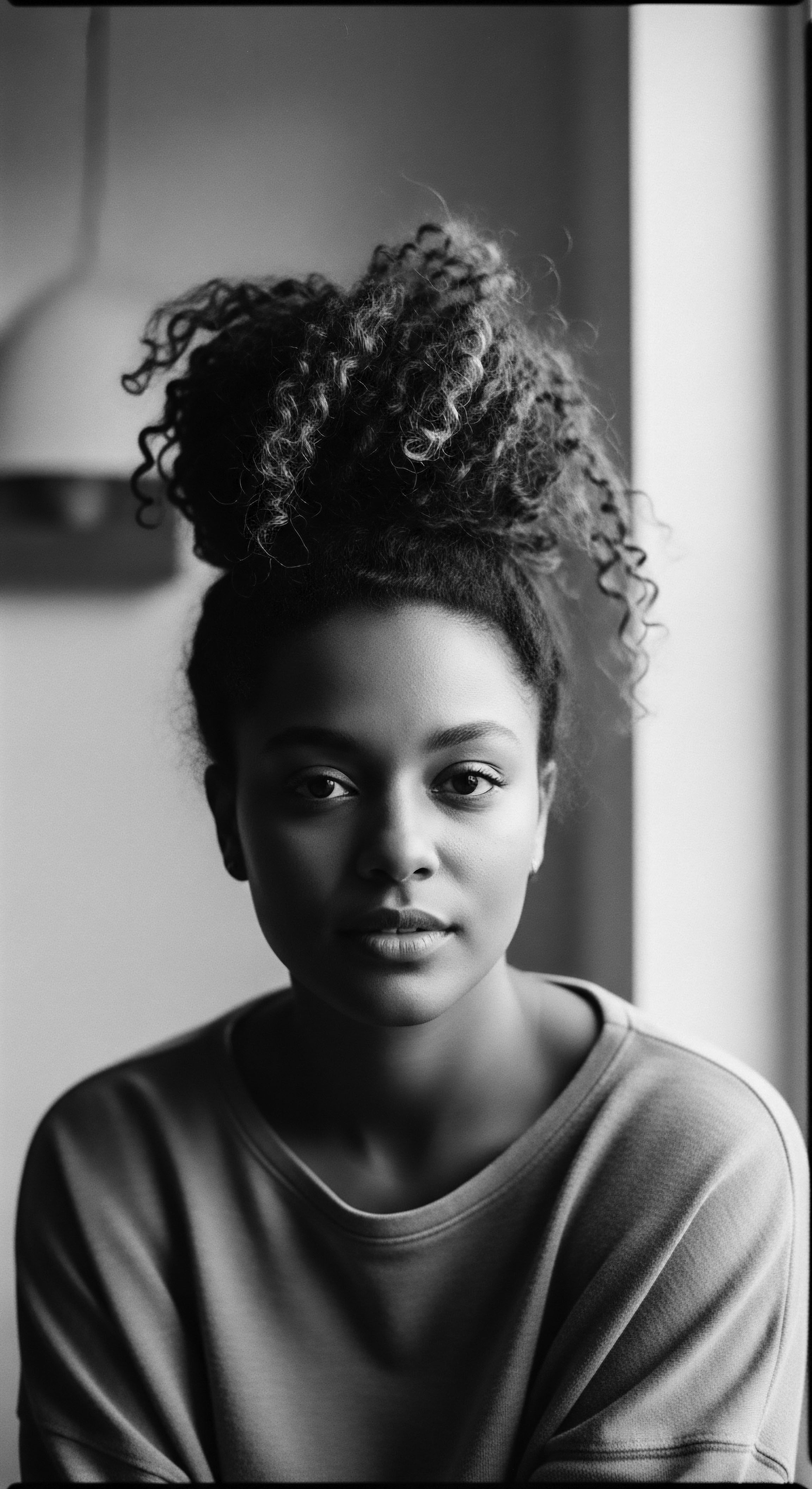
Hair Anatomy And Physiology Specific To Textured Hair
The very structure of textured hair is a marvel, a testament to genetic diversity. Unlike straight strands with their circular cross-sections, a kinky or coily hair strand emerges from an oval-shaped follicle, which often grows at an angle from the scalp. This unique follicular geometry causes the hair to twist and coil as it grows, creating a multitude of bends and turns. Each twist in the hair shaft represents a potential point of fragility, a place where the outer protective layer, the Cuticle, may lift, leading to moisture loss and susceptibility to breakage.
This intrinsic characteristic means that textured hair, while appearing dense due to its many curves, can paradoxically feel drier and more vulnerable to environmental stressors. Understanding this elemental biology is foundational to appreciating why specific ancestral practices, centered on moisture retention and gentle handling, proved so effective.
The distribution of Keratin, the protein building block of hair, also shows a remarkable asymmetry within a coily strand. This unevenness contributes to the natural curl pattern and influences how the hair behaves—how it shrinks when wet, how it responds to humidity, and how it holds its shape. Hair growth rates also vary across hair types, with kinky hair generally growing at a slower daily rate compared to straight hair, as observed by researchers like Geneviève Loussouarn, whose work indicated kinky hair grows at approximately 256 micrometers per day, versus 396 micrometers for European straight hair. These biological realities informed early communities, guiding their methods for hair maintenance and adornment.
Contemporary textured hair practices are not mere trends; they are profound echoes of ancestral wisdom, preserving cultural memory within each strand.

Textured Hair Classification Systems and Their Cultural Origins
The language used to describe textured hair today, often utilizing systems like the Andre Walker Hair Typing System (1A-4C), provides a modern framework for understanding curl patterns. This system categorizes hair from straight (Type 1) to tightly coiled (Type 4), with subcategories denoting variations in wave, curl, or coil tightness. While helpful for product selection and styling guidance in the present, it is worth acknowledging that such classifications are relatively recent constructs. Historically, hair categorization within African societies transcended simple curl patterns.
Hair was a nuanced language of its own, conveying social status, age, marital status, tribal identity, and spiritual beliefs. The Himba tribe, for instance, used dreadlocked styles coated with red ochre paste to symbolize their connection to the earth and their ancestors. In these contexts, a person’s hair was read not by a numerical type, but by its deep cultural symbolism.
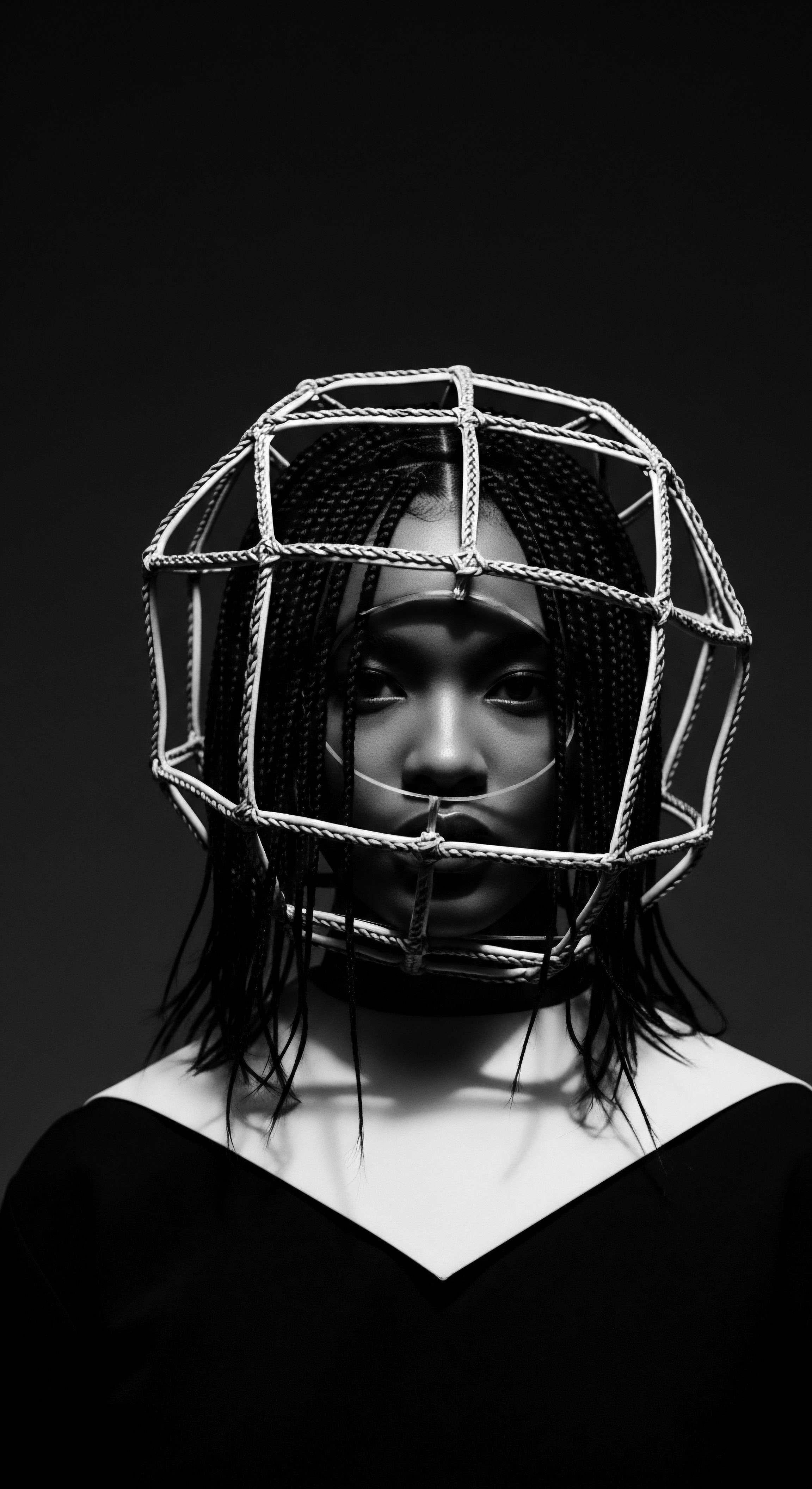
The Essential Lexicon of Textured Hair
A wealth of terms has emerged, both from ancient traditions and contemporary movements, to describe textured hair and its care. Traditional terms, often from various African languages, speak volumes about the reverence accorded to hair. Consider Irun Kiko, a Yoruba term for a hair threading technique, which not only describes a style but also alludes to beliefs around hair bringing good fortune. In contemporary spaces, terms like “coils,” “kinks,” “waves,” “shrinkage,” and “porosity” form a shared vocabulary amongst those with textured hair.
Many of these modern concepts, while scientifically defined today, find their experiential roots in observations passed down through generations. The understanding of “shrinkage,” for example, which causes coiled hair to appear much shorter when dry than its actual length when stretched, was an unspoken reality for countless ancestors who learned to work with their hair’s natural elasticity and curl memory.
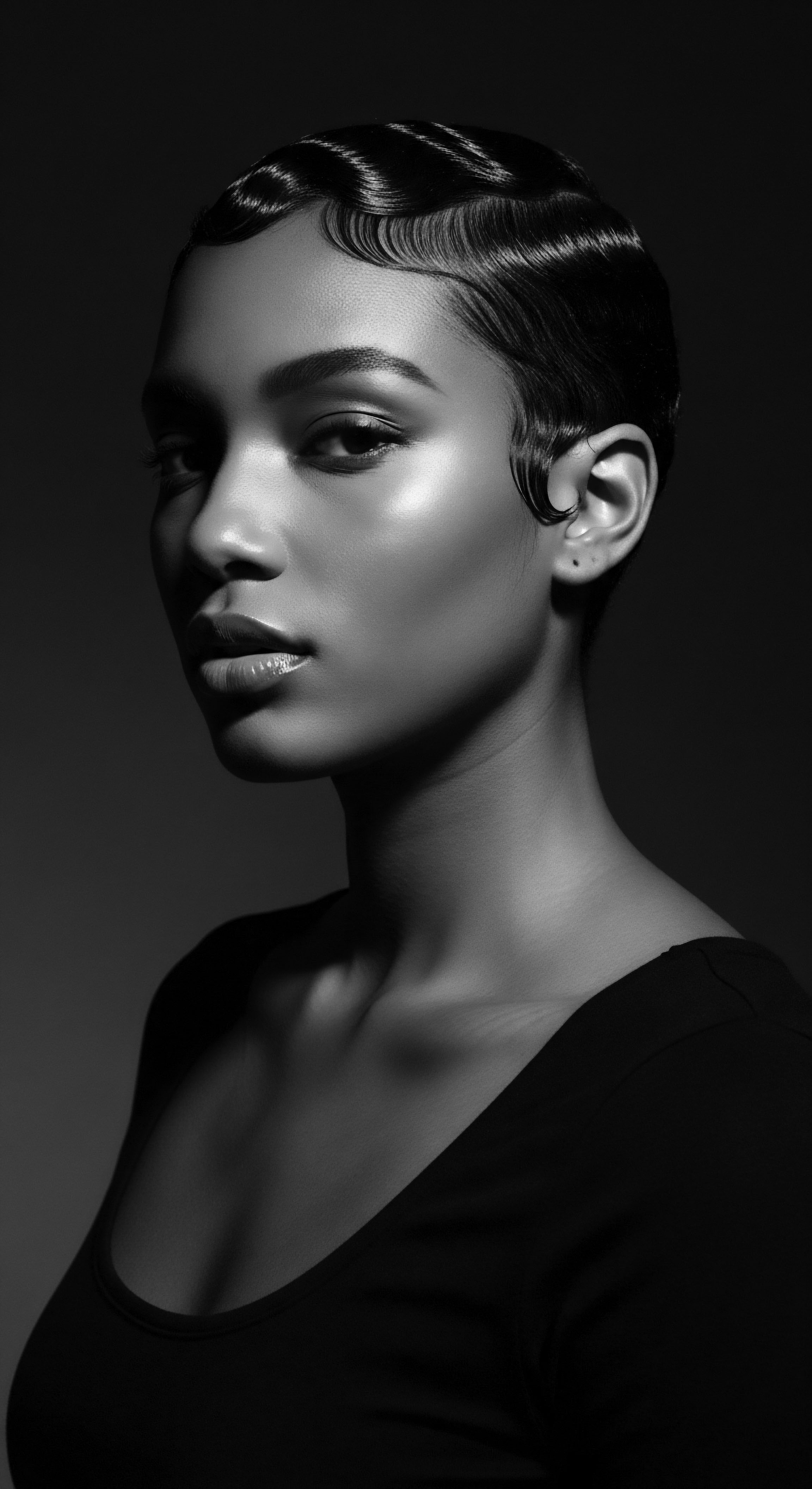
Hair Growth Cycles And Influencing Factors
Hair grows in cycles ❉ Anagen (growth), Catagen (transitional), and Telogen (resting), sometimes with an added Exogen (shedding) phase. Ancestral knowledge, while not using these scientific terms, inherently understood factors that promoted healthy growth and retention. Environmental elements, nutritional intake, and overall wellness directly impact these cycles. Traditional diets rich in local plants, healthy fats, and proteins supported bodily health, which, in turn, supported hair vitality.
The communal aspect of hair care, where elders often tended to the hair of younger generations, also played a part. This communal care fostered gentle handling and consistent attention, both of which are crucial for minimizing breakage and maximizing length retention in textured hair. Ancient communities, living in closer harmony with their surroundings, instinctively knew the connection between wholesome living and thriving hair.
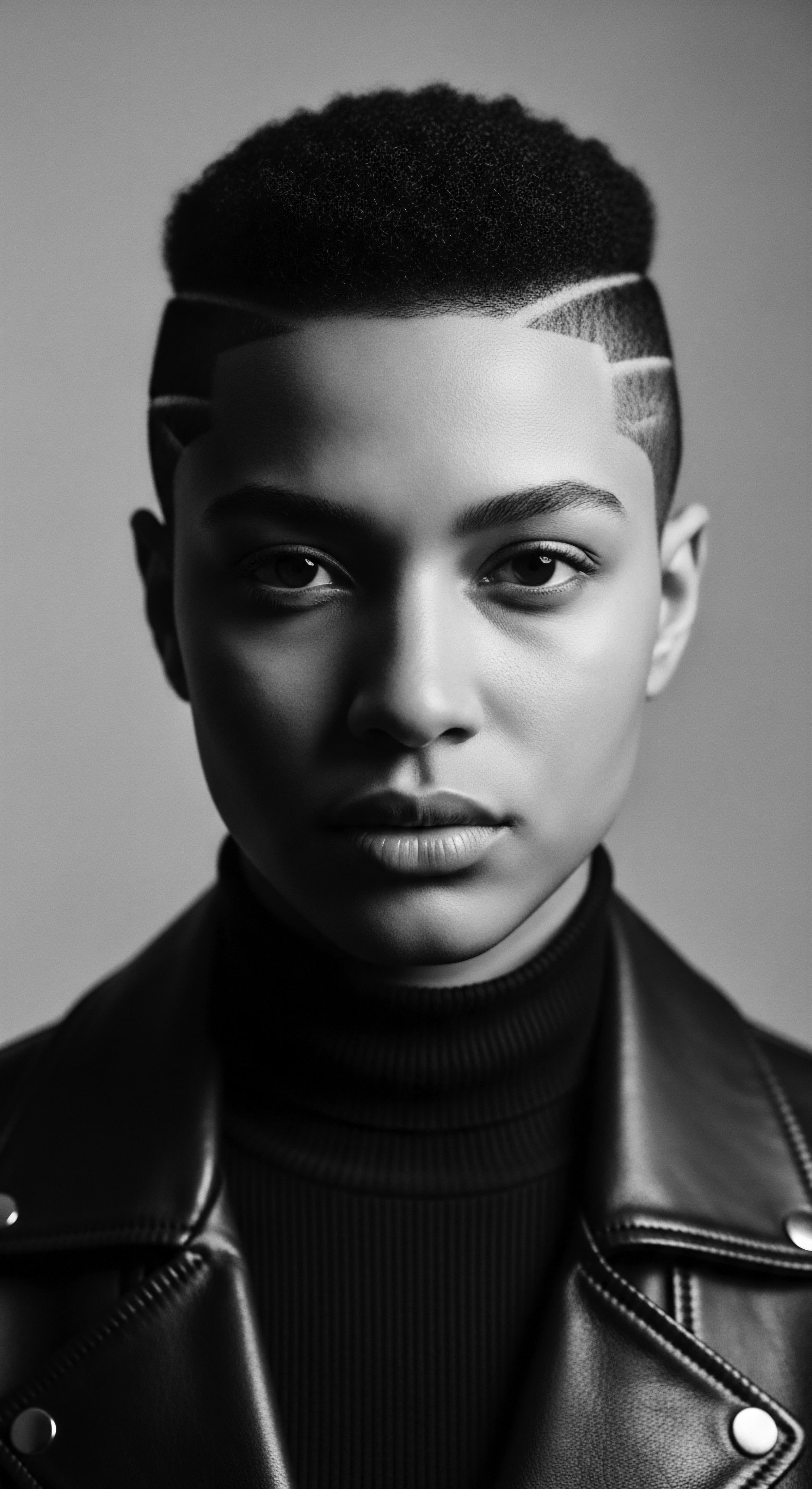
Ritual
The hands that braid, twist, and adorn textured hair today are guided by ancient rhythms, by practices refined over countless generations. What we now classify as “styling” was, for our ancestors, a profound ritual, a declaration of identity, status, and spirit. These methods were not merely cosmetic applications; they were expressions of cultural continuity, acts of resistance, and artistic endeavors deeply tied to heritage. The tools, the techniques, the very adornments, all carry the echoes of a distant past.
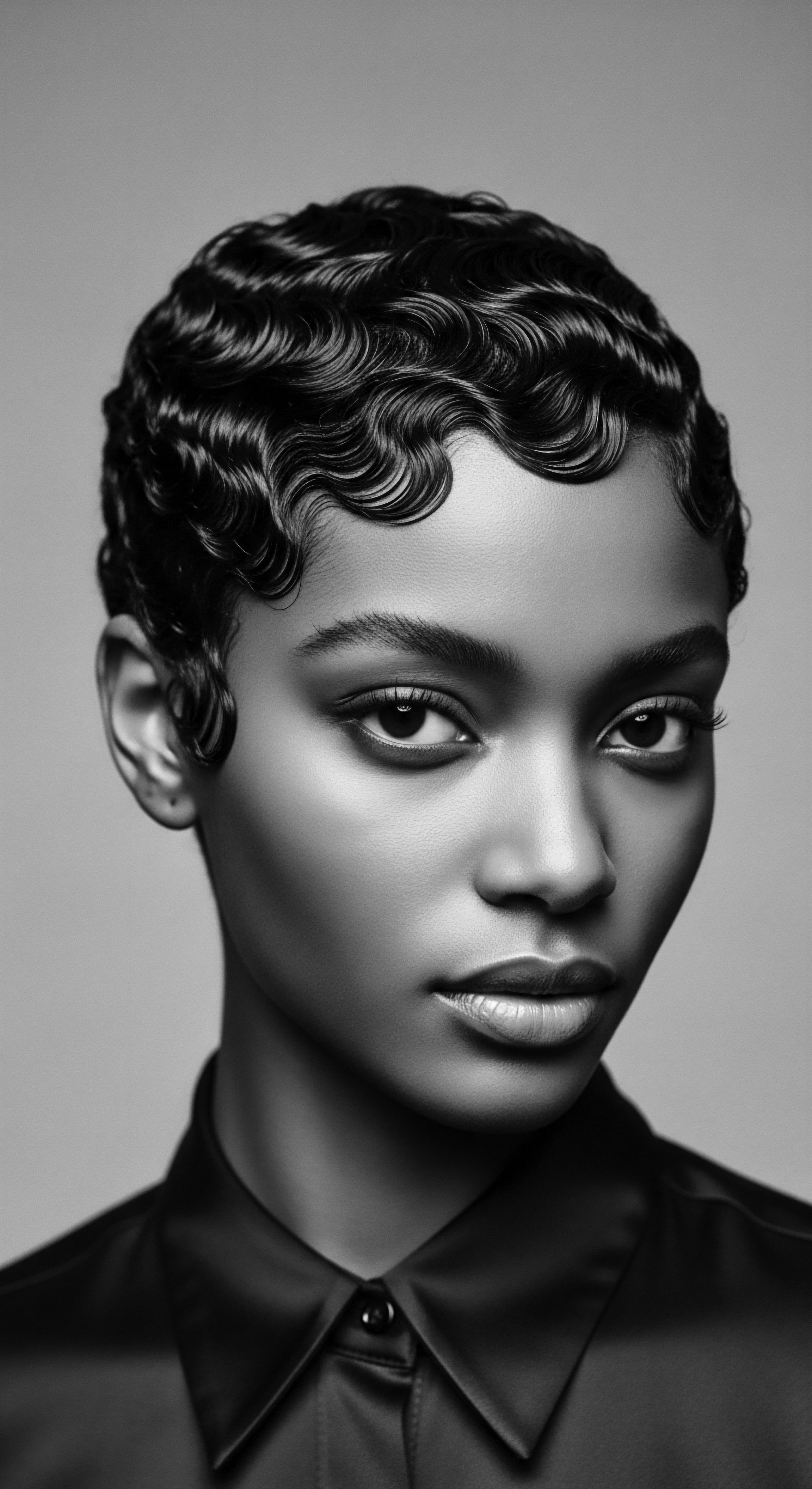
Protective Styling Encyclopedia
Protective styles, a cornerstone of contemporary textured hair care, trace their origins back to antiquity. Styles like Cornrows, braids, and locs were not just visually striking; they served crucial, often symbolic, purposes in ancient African societies. These styles minimized manipulation, shielding delicate strands from environmental elements and breakage, thereby preserving length and promoting overall hair health. The meticulous crafting of braids, often lasting for weeks or months, provided a foundation for healthy hair growth by allowing the hair to rest.
The legacy of cornrows extends beyond protection and beauty. During the transatlantic slave trade, these intricate patterns became a clandestine communication system. Enslaved African women, particularly rice farmers from West Africa, braided rice seeds into their hair as a means of survival, carrying sustenance and fragments of their homeland into forced new beginnings. More profoundly, specific cornrow patterns served as secret maps for escape routes, guiding enslaved people to freedom.
A particular number of braids might indicate an escape path, or a specific design might convey the presence of soldiers or a safe haven. This historical example, rigorously documented, powerfully illuminates how a hair practice became a tool for survival and resistance, a living archive of ingenuity and an unbreakable spirit. San Basilio de Palenque, a village in Colombia founded by escaped enslaved people, stands as a testament to this profound legacy, with its inhabitants having utilized cornrow “maps” to reach freedom.
| Ancestral Tool/Method Afro Comb (Kush, Kemet) |
| Historical Significance/Use Used for detangling, styling, and as a symbol of status or spiritual meaning, dating back over 5,500 years. |
| Contemporary Link/Adaptation Modern wide-tooth combs and picks, still essential for detangling and shaping textured hair, often holding cultural significance as symbols of Black identity. |
| Ancestral Tool/Method Hair Threading (Yoruba, Nigeria) |
| Historical Significance/Use Known as 'Irun Kiko,' used for protective styling, stretching hair, length retention, and adorned with shells or beads to signify social class. |
| Contemporary Link/Adaptation Modern "banding" or "tension threading" techniques, applied for heatless stretching, reducing shrinkage, and protecting hair ends, often using soft threads or elastic bands. |
| Ancestral Tool/Method Gourd Bowls/Pots |
| Historical Significance/Use Used for mixing traditional ingredients like oils, clays, and herbal concoctions for hair treatments. |
| Contemporary Link/Adaptation Modern mixing bowls for DIY hair masks, deep conditioners, and product cocktailing, continuing the tradition of ingredient blending. |
| Ancestral Tool/Method The evolution of hair tools reflects an enduring connection to the heritage of textured hair care, adapting ancient wisdom to current needs. |
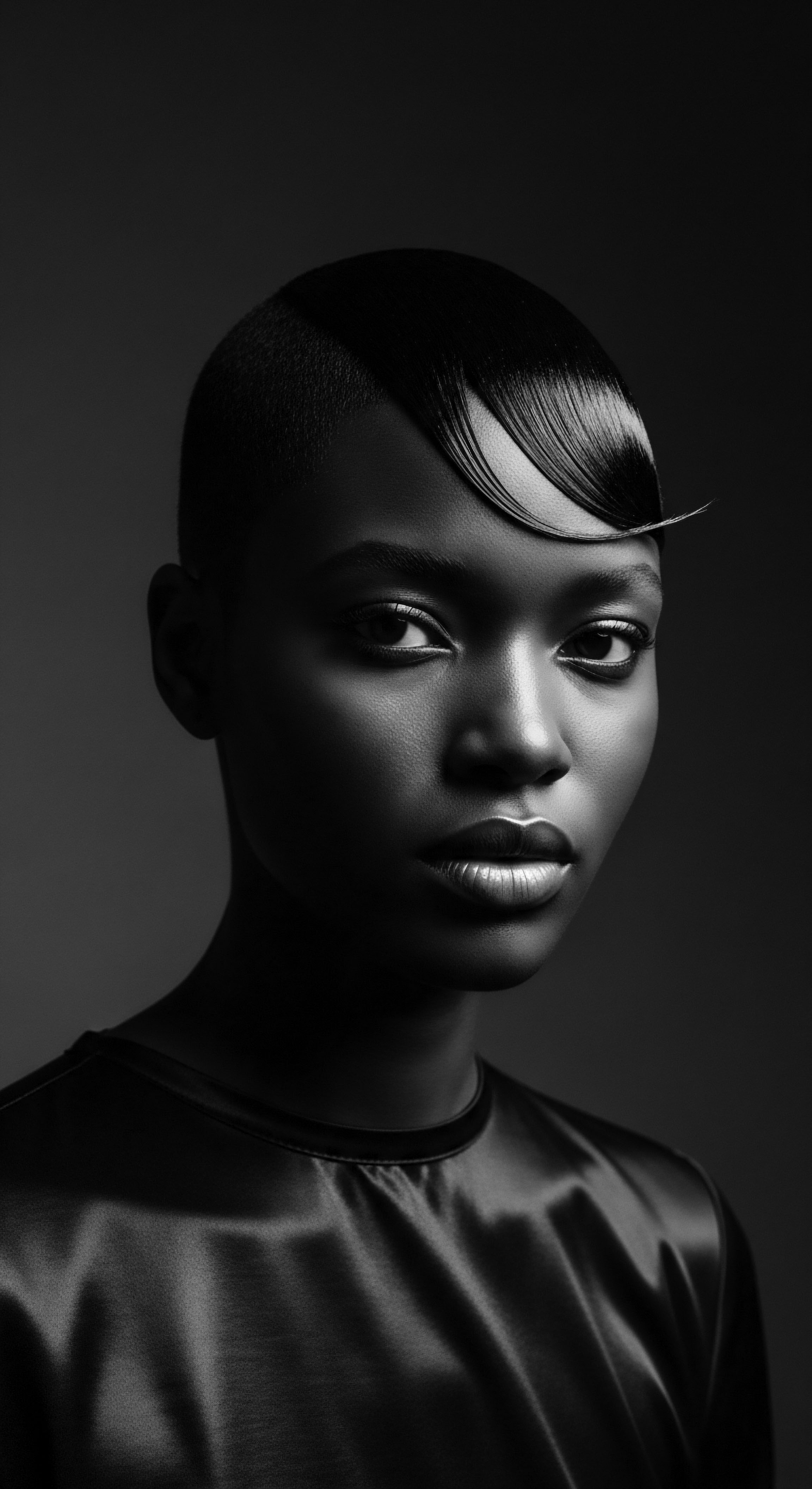
Natural Styling And Definition Techniques
The quest for curl definition, a hallmark of contemporary natural hair aesthetics, finds its roots in ancestral practices of shaping and enhancing textured patterns. Before commercial gels and creams, communities relied on natural emollients and skilled manipulation. Techniques like finger coiling, twisting, and braiding, still widely practiced today, derive from methods used for centuries to organize hair strands into cohesive patterns. The goal was not merely appearance; it often served to differentiate tribal affiliations or signify life stages.
For example, the Yoruba people of Nigeria wore intricate hairstyles, often signaling their community roles. These methods, passed down through generations, reveal an intuitive understanding of hair’s natural inclinations.
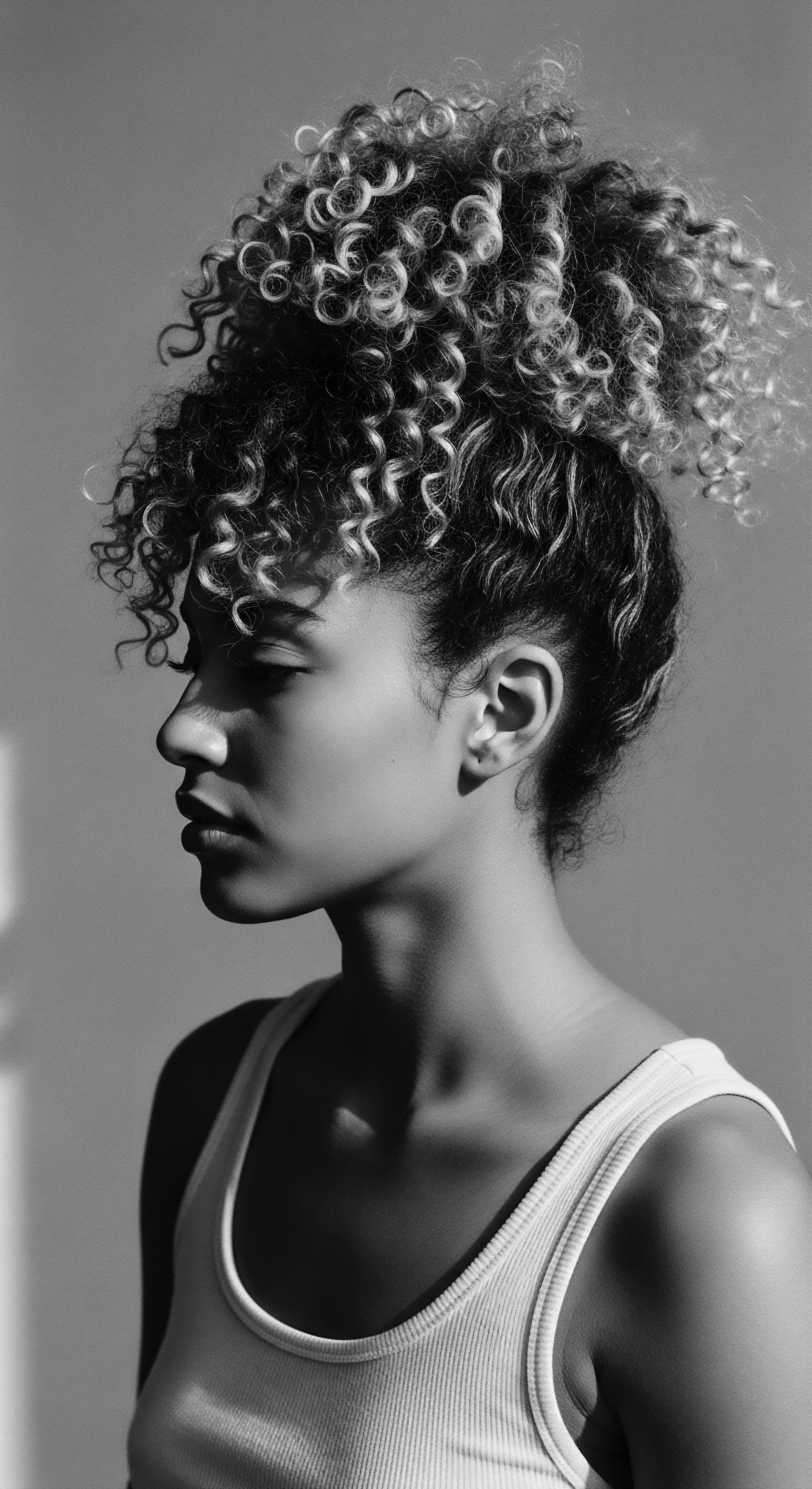
Wigs And Hair Extensions Mastery
The use of wigs and hair extensions, often seen as modern stylistic choices, also has a deep historical lineage within textured hair heritage. In ancient Egypt, both elite men and women wore elaborate wigs made from human hair, wool, or plant fibers, often intricately braided and adorned to symbolize wealth, status, and religious devotion. These were not simply disguises; they were extensions of identity and social standing.
Later, extensions became a practical solution for length and volume. The artistry of attaching additional hair, whether for aesthetic or protective purposes, has thus been a constant across millennia, connecting contemporary desires with ancient practices of adornment.

Heat Styling And Thermal Reconditioning
While modern heat styling tools allow for dramatic transformations, the concept of altering hair’s texture with heat is not new, though the safety implications certainly are. Historically, some communities used heated tools, such as flattened stones or rudimentary irons, to straighten or stretch portions of hair, often for ceremonial purposes or specific styles. However, the prevalence and intensity of such practices were far less than today’s thermal reconditioning.
Ancestral wisdom, more rooted in preservation than drastic alteration, often prioritized gentle, heatless methods to maintain hair health. The contemporary understanding of heat damage – cuticle lifting, protein denaturing, and moisture loss – underscores the wisdom of earlier approaches that relied more on mechanical manipulation and natural ingredients.

The Complete Textured Hair Toolkit
From the finely carved combs of ancient Kush and Kemet, dating back over 5,500 years, to the wide-tooth combs and picks found in every natural hair enthusiast’s arsenal today, the tools of textured hair care carry a remarkable lineage. These ancient combs, often decorated with symbols of nature or social identity, were not merely functional; they were objects of cultural value and spiritual meaning, sometimes buried with their owners. Other tools included various wooden implements for parting and styling.
Today, the toolkit expands to include specialized brushes, satin-lined accessories, and innovative detangling devices, yet the underlying principles remain constant ❉ gentle detangling, precise sectioning, and careful manipulation to protect the hair’s delicate structure. The evolution of these tools reflects an unbroken chain of care, a continuous effort to best serve the unique qualities of textured hair through time.

Relay
The journey of textured hair care extends beyond styling; it encompasses a holistic regimen, night rituals, and the deep-seated wisdom of ingredient knowledge. This segment of our hair heritage speaks to persistent dedication, an understanding that true hair health intertwines with overall wellness and an honoring of ancestral practices. What we perform daily, or weekly, in our care routines often mirrors the enduring traditions of our forebears, refined by modern understanding yet still rooted in a profound reverence for the strand.
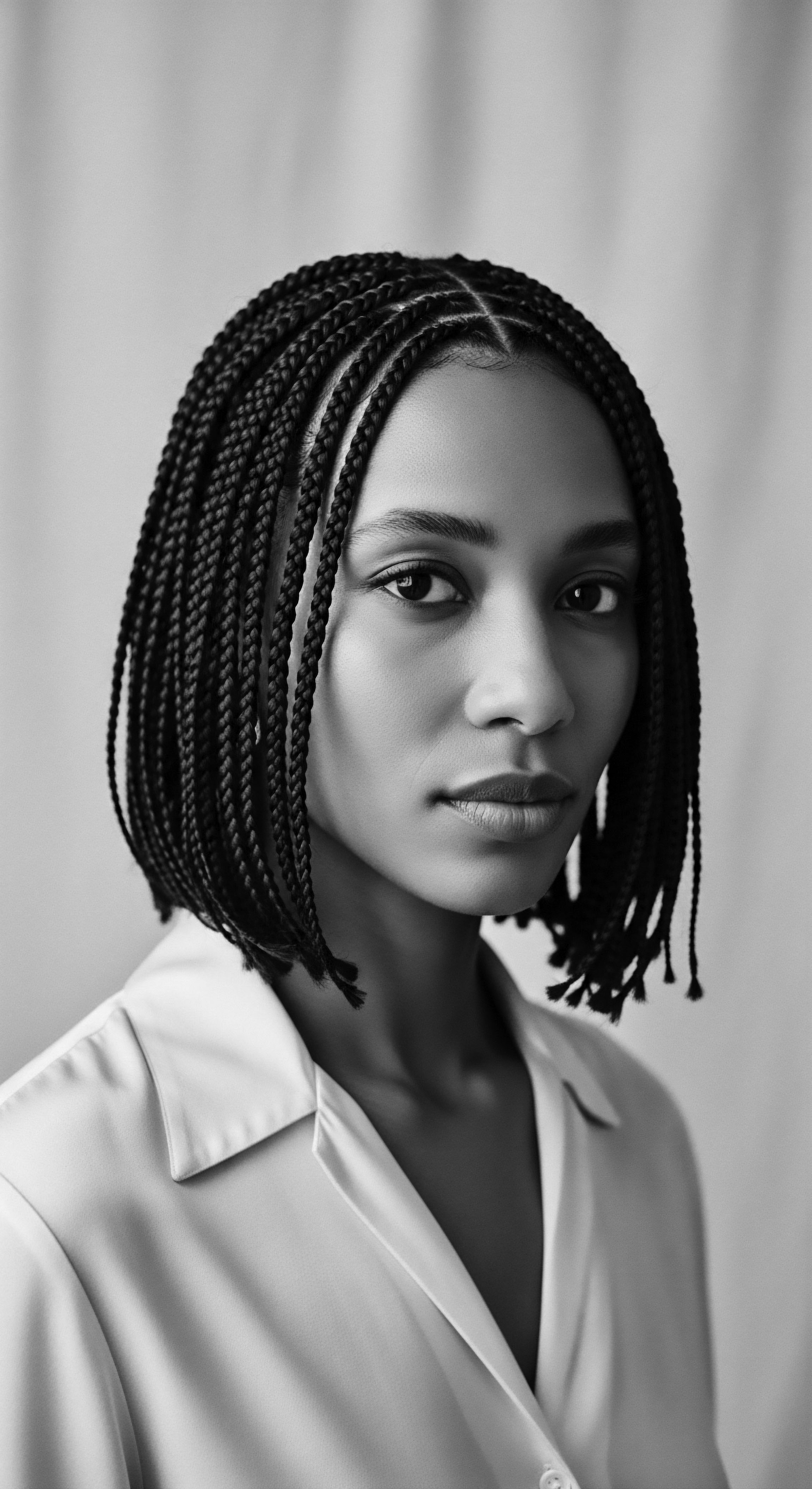
Building Personalized Textured Hair Regimens
The development of a personalized hair care regimen for textured hair in the contemporary world finds profound inspiration in ancestral wisdom. Communities across Africa did not adhere to a single, universal hair routine. Instead, practices were often tailored to individual hair needs, local environmental conditions, and available natural resources. This intuitive customization, driven by close observation and intergenerational knowledge transfer, prefigures modern recommendations for understanding one’s own hair porosity, density, and strand thickness.
Ancestral practices understood the need for individualized care, whether through specific oil blends for drier climates or particular cleansing routines for those engaged in active labor. For instance, the use of Black Soap, a traditional cleanser from West Africa made from plantain skins, cocoa pods, and palm oil, offered a gentle, effective way to purify the hair and scalp without stripping natural oils, a principle echoed in today’s sulfate-free cleansing movements.
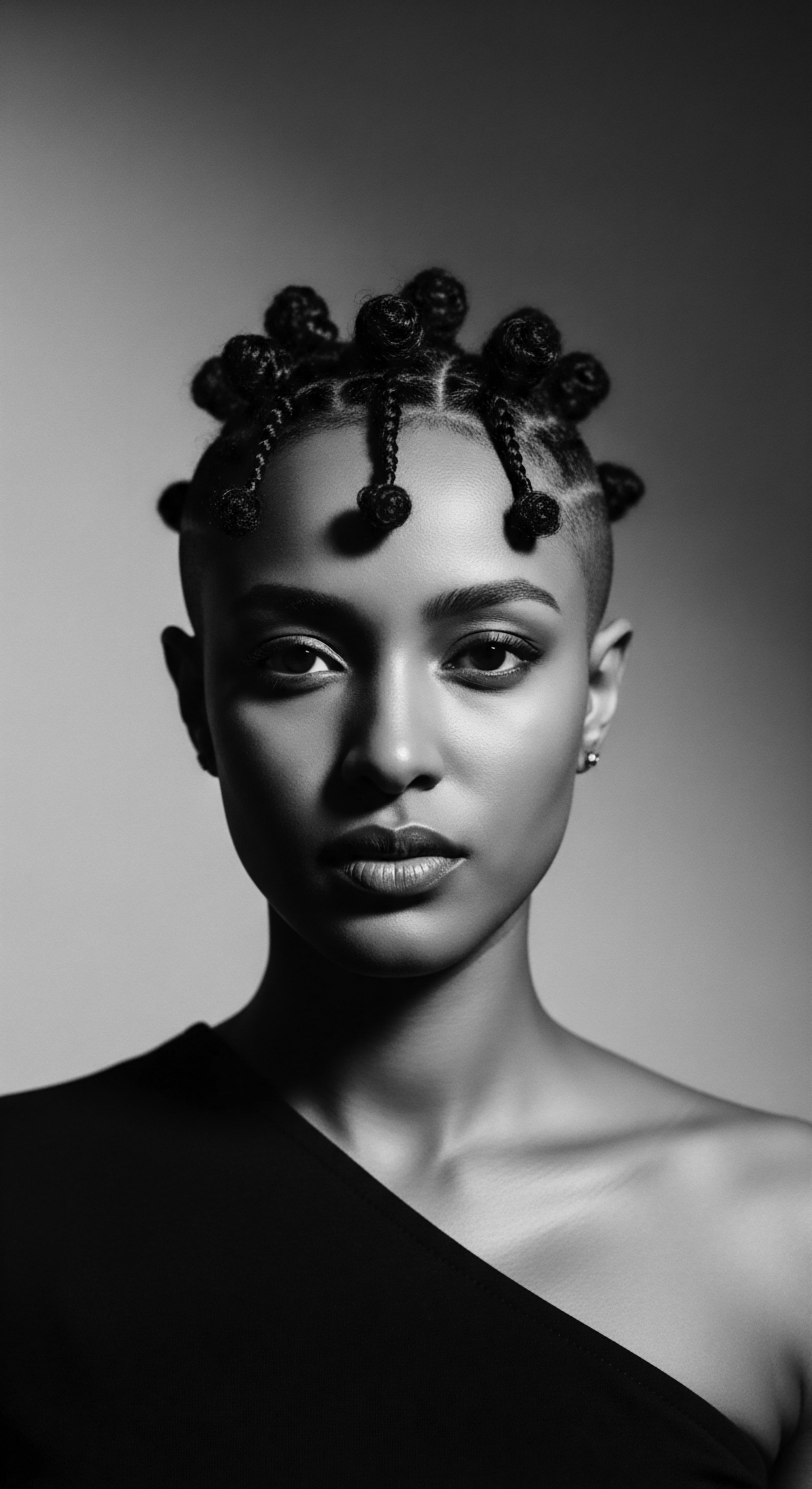
The Nighttime Sanctuary Essential Sleep Protection and Bonnet Wisdom
The seemingly simple act of covering hair at night with a bonnet or scarf carries a weighty heritage. This practice, now a common element in textured hair care for moisture retention and frizz reduction, has roots in the historical use of headwraps across Africa and the diaspora. Beyond aesthetic and ceremonial purposes, head coverings protected hair from dust, dirt, and sun, and maintained intricate styles for extended periods. During the transatlantic slave trade and subsequent periods of oppression, headwraps, or Tignons in some Caribbean contexts, were enforced by colonial powers to signify social inferiority.
Yet, these very symbols of subjugation were reclaimed by African women, transformed into expressions of resistance, cultural pride, and even strategic communication. The act of preserving hair, even under duress, became a powerful statement of identity and defiance. Today, the satin or silk bonnet serves as a modern iteration of this enduring practice, safeguarding strands as ancestors once did with woven cloths, honoring a legacy of protection and resilience.

Ingredient Deep Dives For Textured Hair Needs
The global surge in popularity for natural ingredients within textured hair products is a direct re-connection with ancestral pharmacopeias. Before the advent of synthetic chemicals, communities relied entirely on what the earth provided.
- Shea Butter ❉ Derived from the nuts of the African shea tree, this rich butter has been used for centuries across West Africa for its deep moisturizing, healing, and protective qualities for both skin and hair. Its properties help seal in moisture, a critical need for naturally drier textured hair.
- Chebe Powder ❉ Originating from the Basara Arab women of Chad, Chebe powder is a blend of natural herbs, seeds, and plants. Traditionally used to coat and protect hair, it is renowned for preventing breakage and promoting length retention by locking in moisture, especially for kinky and coily textures. This ancestral secret is now a sought-after ingredient worldwide.
- African Black Soap ❉ As noted previously, this traditional cleanser offers gentle yet effective purification, maintaining scalp health without stripping essential oils.
- Marula Oil ❉ A traditional oil from Southern Africa, rich in antioxidants, used for its moisturizing properties.
- Rooibos Tea ❉ From South Africa, this tea has antimicrobial and antioxidant properties, historically used to aid healthy hair growth.
These ingredients, sourced directly from the earth, were more than remedies; they were elements of daily living, embedded in rituals of care and community. Modern science now validates the efficacy of many of these traditional ingredients, confirming what ancestral knowledge understood intuitively.
The nightly bonnet, a seemingly simple ritual, carries the powerful legacy of headwraps worn by ancestors for protection and a quiet declaration of identity.

Textured Hair Problem Solving Compendium
Addressing common textured hair concerns—dryness, breakage, tangling—draws upon a continuum of knowledge. Ancestral communities developed sophisticated solutions long before contemporary product lines existed. They understood that regular cleansing and conditioning, gentle detangling, and protective styling were paramount. When confronted with scalp irritations or slower growth, traditional healers and elders would often recommend specific herbal rinses, scalp massages with nutrient-rich oils, or dietary adjustments.
The concept of “listening to your hair” and responding to its specific needs, a common refrain in current hair care discussions, echoes the attentive, patient approach that characterized ancestral hair rituals. The emphasis on strengthening the hair shaft and reducing split ends through natural applications, a benefit attributed to ingredients like Chebe powder, is a direct link between historical remedies and modern goals.

Holistic Influences On Hair Health
The ancestral approach to hair care was inherently holistic, viewing hair health not in isolation but as an integral aspect of overall wellbeing. This perspective considered the interplay of diet, spiritual alignment, environmental factors, and communal support. In many African cultures, hair was seen as a conduit for spiritual energy, connecting individuals to their ancestors and the divine. Therefore, caring for one’s hair was often intertwined with spiritual practices and communal rituals.
This deep respect for hair as a sacred part of the self meant that care extended beyond topical application to encompass a lifestyle that supported its vitality. The communal grooming sessions, often a time for storytelling and bonding, underscore the social and emotional dimensions of hair care, reminding us that wellness is a shared journey.
From ancestral communal grooming to today’s shared product recommendations, the collective spirit of textured hair care endures.

Reflection
To witness contemporary textured hair practices is to see a living archive, a continuous unfolding of ancestral wisdom. Each twist-out, every braid, every choice of ingredient carries the deep imprint of generations who understood the profound significance of hair. Our journey through its biology, its styling as ritual, and its holistic care reveals an unbroken chain of heritage. It is a story of resilience, of beauty defiantly maintained, and of identity lovingly reclaimed.
The textures we celebrate today are not merely strands; they are vibrant filaments of history, culture, and spirit, whispering tales of ingenuity and enduring connection across time. This living legacy, the ‘Soul of a Strand,’ continues to inspire, to teach, and to empower, ensuring that the echoes from the source resonate through every coil and curve, shaping futures while honoring the deep, enduring past.

References
- Abou-Bakr, F. (2018). The Cultural Significance of Hair in African Societies. Academic Press.
- Chambers, J. (2016). Hair Story ❉ Untangling the Roots of Black Hair in America. St. Martin’s Press.
- Gordon, S. T. (2009). The History of Dreadlocks. African American Museum in Philadelphia.
- Mercer, M. (2008). African-American Hair ❉ An Illustrated Cultural History. Milady.
- Patton, T. O. (2006). Pushing Up Daisies ❉ A History of African American Hair. Rutgers University Press.
- Rastogi, S. (2014). The Social and Cultural History of Hair. Routledge.
- Seabrooks, R. (2011). The Hair That Has Grown ❉ A Cultural Study of Black Hair in the United States. University of California Press.
- Thames, A. M. (2010). Hair ❉ Its Power and Meaning in African and African American Cultures. Peter Lang.
- Walker, A. (2000). Andre Talks Hair. Simon & Schuster.
- White, S. (2015). Stories of Freedom in Black New York. Harvard University Press.
